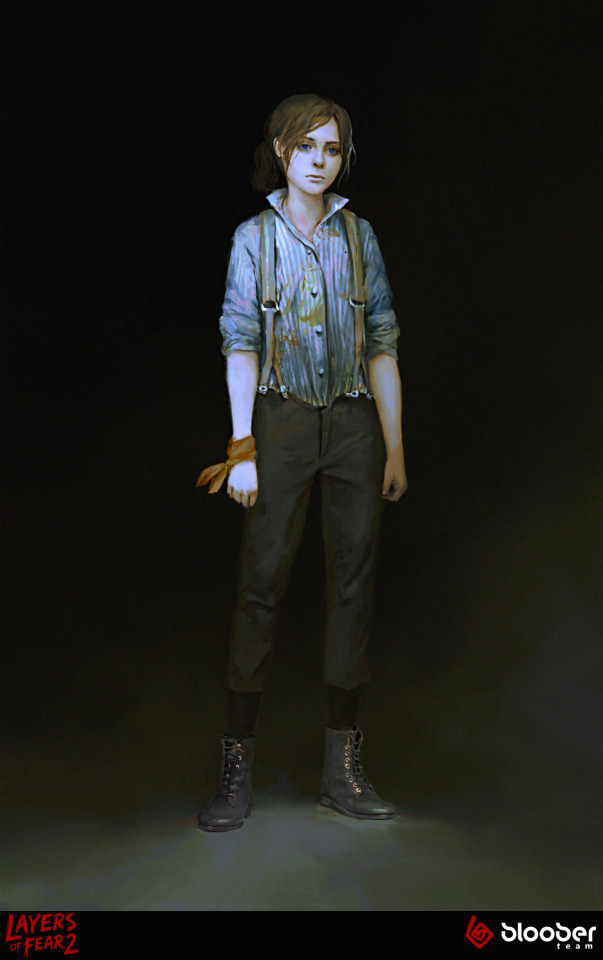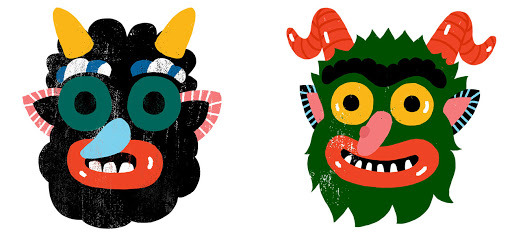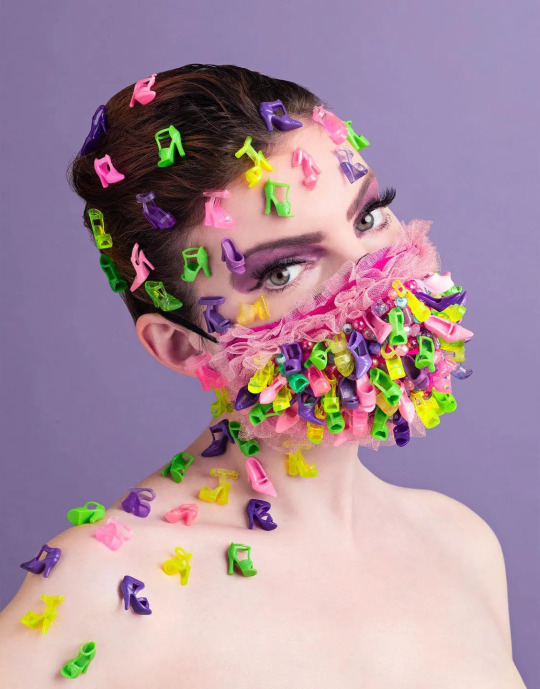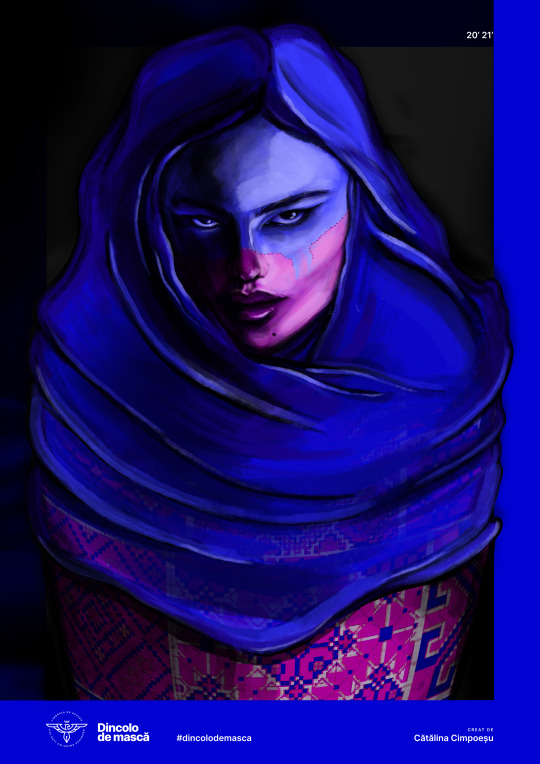#another piece of concept art from Layers of Fear 2 that I forgot to post
Explore tagged Tumblr posts
Photo


#another piece of concept art from Layers of Fear 2 that I forgot to post#layers of fear#lof2#lof#layers of fear 2#concept art#character art#horror
309 notes
·
View notes
Text
Layer masking
During these unpredictable times talking about masks can be either a taboo topic or a very controversial one. I have recently joined one of the biggest graphic design community in Romania after virtually meeting Stefan, the owner of “The Design Bookstore”, back in April this year. Representing the only community in Romania where designers of any king can meet and interact in the digital form, he recently created an open challenge (#BehindTheMask- #DincoloDeMasca) that is meant to encourage every member to illustrate the whole concept of wearing a mask and what the year 2020 meant for them, in their own style. There are no rules, no judgements and no boundaries.
Evolving to simplicity
Aiming to get out of my comfort zone I decided to try and reflect on the overall feelings created by wearing a mask, especially nowadays. However, I was trying to understand how a mask can change people’s mood along with their actions while interaction with someone else and how are they perceived. A mask can confer a feeling of safeness to some, while in other cases can be part of a placebo effect. People tend to perceive the outside world in a different way and forget to wisely select their words or be aware of their reactions (Rey et. al, 2015) when they are wearing a mask.
In my research for a better understanding I depicted the definition of a mask: covering made for either protecting your face from the outside physical possible dangers by making people be afraid of your unusual look or attracting curiosity and a cheerful sensation.
Nonverbal communication is crucial in understanding the person you are talking to, especially in topics such as graphic design and marketing (Yu and Ko, 2017). You can contribute to the final expression generated by the receiver of the message by inducing some points of view or setting some guidelines from the beginning, aiming to influence the perception of the individual and have the expected reaction in the end.
Starting from the traditional approach where masks are usually associated with religion and culture, resembling certain periods in time and embodying symbolism and expression of ways to adapt to the environment during evolving times, we can say they fostered self-awareness and the feeling of belonging to a group (Edston, 2015, pp.70-80). The sensation of fear vanished over time, as many artists tried to remake them in a less ferocious way, maintaining the major details on point. I think this was a wonderful approach, but because of that, people forgot the importance of masks from back then, since spirits and mythology are not representing an area of interest in the technology era.

Romanian Folk Mask (Sitaru, 2019)
Recently, masks were not seen as a practice of contemplating about spirits and old beliefs and they have transformed into a more practical version, keeping the original purpose alive: to protect the owner. Due to the events we are facing at the moment and the divided formed groups, the purpose of wearing a mask and its efficiency was questioned after many years, in spite of the ancient presumptions known so far (Violante & Violante, 2020).
Expressing feelings in design
Coming to a more modern approach, I had the chance to find Anne Sophie Cochevelou’s artworks created this year as a way of exceeding the pandemic boundaries and illustrating the concept of wearing a mask from another point of view. As mentioned earlier, the reason to wear a mask was doubtful by many and this is why she tried to twist people’s perspective including new materials in the making concept. The deffiniton of “protecting yourself from the outside dangers” was understood differently now, in comparison with the traditional masks.
Leaving the medical analysis aside and focusing on the feelings, people tend to think they are powerful while wearing a mask, because their gestures can not be read, misunderstood and used against them. On the other hand, the created shelter gives people the impression of not being able to express themselves and they also tend to feel trapped under a piece of material. Anne Sophie’s perception tried to prove the opposite. Masks can express more than mimics will. Masks offer intimacy and allow you to express your unknown styles and ideas, at the same time. Masks can attract smiles around yourself.
In a realistic manner masks are a really powerful source of coating feelings, mislead emotions and create interpretable postures.

Lego mask (Cochevelou, 2020)

Lips mask (Cochevelou, 2020)

Barbie shoes mask (Cochevelou, 2020)
Another mask behind the mask
Reading and analysing multiple non-academic and academic sources made my initial idea endure significant changes. As for my entry in the challenge, I have worked for a few days on the following artwork, while conceiving this post, attaching the translated description:
“A modern, unconventional and profound version of a Matryoska doll, embodying not only the mask worn for protection against the external environment, but also all the feelings, memories and emotions hidden under many other inner masks, of whose existence the world is aware, but too fearful to discuss because of avoiding consequences.
Facial expression sums up all the person's fears, the insecurity of the environment in which he lives and the inability to have authority over the decisions made by society, which will have a major impact on his quality of life at some point. The doll is completely covered, excluding the face in a surprising way. There you can see a stitch trace following the contour of the cheek and and the mask gradually fading.”

Matryoska (Cimpoesu, 2020)
“The rest is left to be interpreted.”
To conclude, I truly believe the initiative for the challenge should be highly appreciated and should have many more future editions to encourage any kind of artists to show their creativity without any hesitation without depending on their design experience.
-------------------------------------------------------------------------------------------
Asafti, S. (2020) Dincolo de mască. [Instagram] Available at: https://www.instagram.com/p/CJbKxdro4-G/ [Accessed: 30th of December 2020]
Cimpoesu, C. M. (2020) Matryoska. Published personal artwork
Cochevelou, A. S. (2020) Barbie shoes mask [Instagram] Available at: https://www.instagram.com/p/B_aOjl0p5Pq/ [Accessed: 25th of November 2020]
Cochevelou, A. S. (2020) Lego mask [Instagram] Available at: https://www.instagram.com/p/B_fX_ZYpGXe/ [Accessed: 25th of November 2020]
Cochevelou, A. S. (2020) Lips mask [Instagram] Available at: https://www.instagram.com/p/B_nGiWpJS0h/ [Accessed: 25th of November 2020]
Edson, G. (2015) Masks and masking: Faces of tradition and belief worldwide. North Carolina: McFarland & Company
Rey, A.E., Riou, B., Muller, D., Dabic, S. & Versace, R. (2015) "The Mask Who Wasn't There": Visual Masking Effect With the Perceptual Absence of the Mask", Journal of experimental psychology. Learning, memory, and cognition [Online] vol. 41, no. 2, pp. 567-573. https://psycnet-apa-org.ezproxy.herts.ac.uk/fulltext/2014-34444-001.pdf [Accessed: 25th of November 2020]
Sitaru, P. (2019) Romanian Folk Mask [Instagram] Available at: https://www.instagram.com/p/BoqcPHRD9y-/ [Accessed: 25th of November 2020]
Sitaru, P. (2019) Romanian Folk Mask [Instagram] Available at: https://www.instagram.com/p/BopWpsuBErN/ [Accessed: 25th of November 2020]
Violante, T. and Violante, F. S. (2020) “Surgical masks vs respirators for the protection against coronavirus infection: state of the art”, La Medicina del Lavoro | Work, Environment and Health [Online] 111(5), pp. 365-371. https://doi.org/10.23749/mdl.v111i5.9692 [Accessed: 25th of November 2020]
Yu, C. & Ko, C. (2017) "Applying FaceReader to Recognize Consumer Emotions in Graphic Styles", Procedia CIRP [Online] vol. 60, pp. 104-109. https://doi.org/10.1016/j.procir.2017.01.014 [Accessed: 25th of November 2020]
0 notes